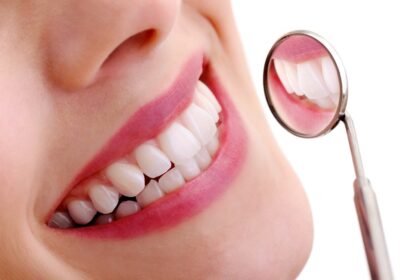
Common Misconceptions About Invisalign for Adults
Orthodontic treatment isn’t just for teenagers anymore. Many adults are turning to Invisalign as a convenient and discreet way to straighten their teeth. However, myths and misconceptions still prevent some from considering this modern solution. To help you make an informed decision, let’s debunk the most common misunderstandings surrounding Invisalign for adults and reveal the facts behind this innovative treatment.
Misconception 1: Invisalign Is Only for Teens
One of the most widespread myths is that Invisalign is designed exclusively for teenagers. While Invisalign Teen exists, adult-specific aligners are just as common. In fact, a large percentage of Invisalign users are adults seeking a subtle, professional way to correct alignment issues without metal braces.
The truth: Invisalign is equally effective for adults as it is for teens. It’s designed to fit seamlessly into a busy professional lifestyle, offering a discreet treatment that doesn’t interfere with work or social interactions.
Misconception 2: Invisalign Can’t Fix Complex Dental Problems
Some people assume Invisalign only works for minor gaps or mild crowding. While this was true in its early stages, today’s Invisalign technology has advanced significantly. Using attachments, precision wings, and elastics, orthodontists can now treat moderate to complex issues like crossbites, overbites, and misaligned jaws.
The truth: Invisalign can handle far more than just minor cosmetic fixes. Its 3D digital planning system allows orthodontists to map even complex movements with precision.
Misconception 3: Invisalign Is Slower Than Metal Braces
Many believe that because Invisalign aligners are removable, they must take longer to produce results. In reality, the treatment time depends on your specific dental condition and your commitment to wearing the aligners for the recommended 20–22 hours a day.
The truth: For most adults, Invisalign treatment takes about the same time—or even less—than traditional braces. Some mild cases finish in as little as six months with consistent use.
Misconception 4: Invisalign Isn’t as Effective as Braces
Traditional braces have long been associated with reliable results, so it’s natural for some adults to question Invisalign’s effectiveness. But clear aligners apply controlled, continuous pressure to shift teeth in planned increments, just like braces.
The truth: When used under professional supervision, Invisalign delivers the same predictable, high-quality outcomes as conventional orthodontic systems. The added benefit is comfort and aesthetics.
Misconception 5: It’s Painful or Uncomfortable
Metal brackets and wires can cause irritation and soreness, which makes many adults hesitant to revisit orthodontics. Invisalign’s aligners, however, are made from smooth medical-grade plastic that minimizes discomfort.
The truth: While you may feel mild pressure during the first few days of each new aligner set, the sensation is temporary and indicates that your teeth are moving correctly. Most adults find Invisalign far more comfortable than braces.
Misconception 6: It’s Too Expensive for Adults
Cost often discourages adults from pursuing Invisalign, but the assumption that it’s unaffordable is misleading. The price depends on treatment complexity and duration, but many clinics offer flexible payment plans. Dental insurance often covers a portion of orthodontic care as well.
The truth: Invisalign is a long-term investment in your dental health and confidence. When factoring in comfort, aesthetics, and reduced maintenance, many adults find it worth the cost.
Misconception 7: You Can Skip Orthodontist Visits
Since Invisalign aligners are removable, some assume the treatment is entirely self-managed. That’s far from true. Regular checkups are crucial for monitoring progress, ensuring proper tooth movement, and making adjustments if necessary.
The truth: Invisalign offers more flexibility, but not less supervision. Orthodontists use digital tracking to make sure your smile is progressing exactly as planned.
Misconception 8: Results Don’t Last
Another myth suggests teeth may shift back after Invisalign. However, this is not unique to clear aligners—retainers are necessary after any orthodontic treatment.
The truth: Long-term results depend on consistent retainer use. Wearing your retainer as prescribed helps maintain alignment and keeps your smile stable for years.
Final Thoughts
Invisalign has transformed adult orthodontics, offering a modern, comfortable, and discreet alternative to braces. It’s efficient, hygienic, and adaptable to professional lifestyles—making it ideal for adults who want to improve their smiles without drawing attention.


















